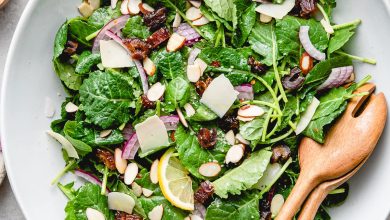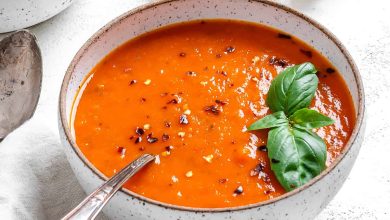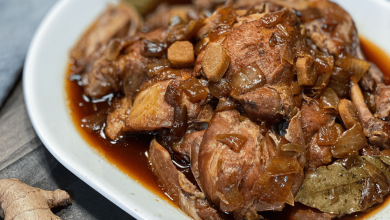Almond Paste
🥜🍯 Almond Paste: A Sweet Culinary Delight 🍯🥜
Almond paste is a versatile and delicious ingredient used in various culinary creations, especially in baking. Here’s a comprehensive guide to almond paste, including its history, components, preparation steps, and the time required to make it. 😊
What is Almond Paste?
Almond paste is a sweet, dense, and pliable mixture made primarily from ground almonds and sugar. It has a smooth texture and a rich, nutty flavor that makes it a popular ingredient in pastries, cakes, and confections. Almond paste is often confused with marzipan, but they are distinct products. Almond paste contains a higher proportion of almonds and is less sweet than marzipan.
History of Almond Paste
The history of almond paste can be traced back to ancient Mediterranean and Middle Eastern cuisines. Almonds themselves have a rich history dating back thousands of years, originating in the Middle East. Almond paste likely evolved as a way to preserve and utilize almonds in sweet dishes. It gained popularity in European baking during the Middle Ages and Renaissance periods, and today, it’s a beloved ingredient in many global cuisines.
Components of Almond Paste
Almond paste typically consists of just a few simple ingredients:
- Blanched Almonds: These are almonds without their skins, which are finely ground to form the base of the paste.
- Granulated Sugar: Sugar is added to sweeten the paste and create its characteristic sweetness.
- Egg Whites: Egg whites are sometimes added to improve the texture and pliability of the almond paste. They also help bind the ingredients together.
Steps to Prepare Almond Paste
Here’s a step-by-step guide to making almond paste at home:
-
Prepare the Almonds: Start by blanching almonds to remove their skins. Then, dry them thoroughly to ensure they are completely moisture-free.
-
Grind the Almonds: Use a food processor or almond grinder to finely grind the blanched almonds. You can add a portion of the sugar during this step to prevent the almonds from turning into almond butter.
-
Combine with Sugar: In a separate bowl, mix the ground almonds with the remaining sugar. This helps evenly distribute the sweetness.
-
Add Egg Whites (Optional): If you want a smoother and more pliable almond paste, you can incorporate a small amount of egg white into the mixture. This step is optional but can enhance the texture.
-
Knead the Paste: Form the mixture into a ball and knead it until it becomes a smooth, uniform paste. If it’s too dry, you can add a tiny amount of water.
-
Store: Wrap the almond paste tightly in plastic wrap or an airtight container and store it in the refrigerator. It will keep well for several weeks.
Time Needed to Prepare Almond Paste
The time required to make almond paste depends on your familiarity with the process and whether you use pre-blanched almonds. On average, it can take around 20-30 minutes to prepare almond paste from start to finish. The key time-consuming step is grinding the almonds, but this can vary depending on the equipment you use.
Now that you know all about almond paste, you can use it to create delightful desserts and pastries that will impress your friends and family. Enjoy your culinary adventures with this delectable ingredient! 🍰🌰👩🍳
Certainly! Here are the nutrition facts and health information related to almond paste:
Nutrition Facts (Per 100g of Almond Paste):
- Calories: 500 kcal
- Total Fat: 29 g
- Saturated Fat: 2.3 g
- Monounsaturated Fat: 18 g
- Polyunsaturated Fat: 5.5 g
- Cholesterol: 0 mg
- Sodium: 4 mg
- Total Carbohydrates: 53 g
- Dietary Fiber: 4 g
- Sugars: 47 g
- Protein: 9 g
- Vitamin E: 26.2 mg (138% of the Daily Value)
- Calcium: 95 mg (9.5% of the Daily Value)
- Iron: 1.1 mg (6% of the Daily Value)
- Magnesium: 150 mg (37.5% of the Daily Value)
Health Information:
-
Healthy Fats: Almond paste is a good source of heart-healthy monounsaturated and polyunsaturated fats, which can help reduce the risk of cardiovascular diseases when consumed in moderation.
-
Low in Cholesterol and Sodium: Almond paste is naturally cholesterol-free and low in sodium, making it suitable for those with heart health concerns.
-
Rich in Vitamin E: Almond paste is a significant source of vitamin E, an antioxidant that can help protect cells from damage caused by free radicals.
-
Dietary Fiber: It contains dietary fiber, aiding digestion and promoting a feeling of fullness.
-
Protein: While not a high-protein food, almond paste does provide some protein, contributing to muscle health and satiety.
-
Minerals: It contains essential minerals like calcium and magnesium, which are important for bone health and overall well-being.
-
Moderation is Key: Due to its sugar content, almond paste should be consumed in moderation, especially by those watching their sugar intake. It is a treat rather than a daily staple.
Remember, almond paste is often used in small amounts as a flavor enhancer in desserts and baked goods. Incorporating it into your diet in moderation can be a delightful and nutritious addition to your culinary repertoire.








